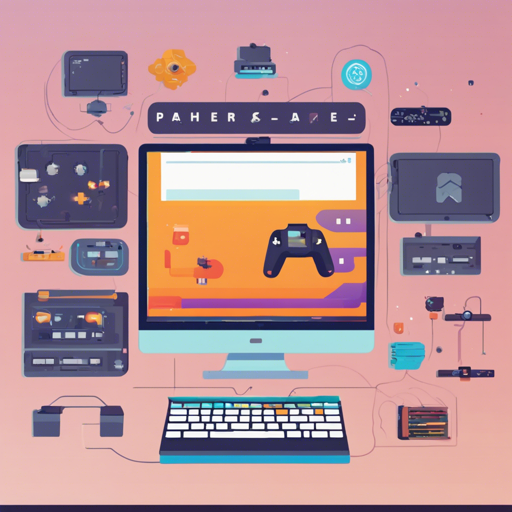Welcome to a step-by-step guide on setting up your game development environment using Phaser, ES6, and Webpack! With this tutorial, you’ll find that creating games is as fun as playing them, and you’ll be able to transform ideas into interactive experiences.
What You Will Need
- A computer with a(code) working internet connection.
- Node.js and npm installed.
- Basic understanding of JavaScript and game development online resources.
Getting Started
Let’s kick-start your development journey with a few simple setup steps:
1. Clone the Repository
First, you need to clone the project repository to your local machine. Open your terminal and navigate to your workspace directory, then run:
git clone https://github.com/leanphaser-es6-webpack.git2. Install Node.js and npm
If you haven’t already, head to the official Node.js website and install it. Npm (Node Package Manager) is included with Node.js and is essential for managing your project dependencies.
3. Install Dependencies
Once you’re in the cloned directory, you can install the required dependencies by running:
npm installOptionally, if you’re a fan of Yarn, you can use that instead!
4. Run the Development Server
Now comes the exciting part! You can run your development server using:
npm run devThis command not only runs a server but also enables automatic browser refresh as you modify your project files. Open your web browser and go to http://localhost:3000 to see your game in action!
Building for Deployment
When you’re ready to deploy your game, all you need to do is optimize your compiled bundle with the following command:
npm run deployThis will ensure that your game is polished and ready for the world to play!
Deploy for Cordova
If you want to deploy your game as a mobile app, you’ll need to adjust your src/index.html file by uncommenting the cordova.js file and filling in suitable information in config.xml.
- For iOS: Use the command
npm run cordovafollowed bycordova platform add iosandcordova run iosto run your application. - For Android: Similar steps apply, but you will use the relevant Android commands instead.
Understanding the Project Structure
Think of the code in your project like a ship being constructed in a shipyard. Just as each section of the ship plays a vital role in its overall function, so does each line of code contribute to the smooth sailing of your game. You’ll find files for configuration, assets, and game logic working in harmony to create an interactive experience. This setup allows you to focus on crafting exhilarating gameplay without worrying about the heavy lifting of code management.
Troubleshooting
If you encounter issues while setting up or running your project, here are a few troubleshooting suggestions:
- Make sure you have all dependencies installed correctly. You can always try deleting the
node_modulesfolder and runningnpm installagain. - If the development server fails to start, ensure that your Node.js and npm versions are up to date.
- Check the browser’s console for any error messages or logs that can guide you.
For more insights, updates, or to collaborate on AI development projects, stay connected with fxis.ai.
Further Configurations
Before diving deep into development, review the configuration file. You may want to set up dimensions or specify webfonts—simply edit the respective sections in the config file.
Conclusion
You’ve now set the groundwork for game development with Phaser, ES6, and Webpack! With this powerful combination, your creative potential is limited only by your imagination. Don’t forget: practice makes perfect, so keep creating and experimenting.
At fxis.ai, we believe that such advancements are crucial for the future of AI, as they enable more comprehensive and effective solutions. Our team is continually exploring new methodologies to push the envelope in artificial intelligence, ensuring that our clients benefit from the latest technological innovations.

